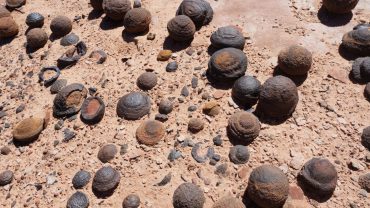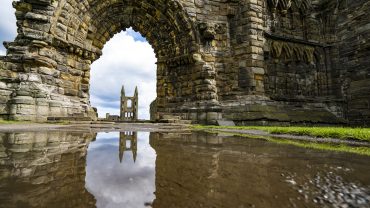Comparable to the phenomenal power of the eruption of Mount Tambora in Indonesia in 1815, one of the most powerful volcanic eruptions in recorded history, the Minoan era eruption may have been even greater, perhaps the single most powerful explosion in human history.
The sheer scale of this eruption, with its vast plumes of ash and pyroclastic flows, not only reshaped the island’s geography but also sent shockwaves through the ancient world.
The devastating effects of the Mount Thera eruption were far-reaching. It unleashed a calamity of epic proportions, including massive tsunamis believed to have ravaged the coasts of nearby islands and the Minoan civilisation’s heartland in Crete, and may well have been instrumental in their decline and fall.
So literally and metaphorically powerful was the explosion, it has been linked to stories from the bible as well as Plato’s legendary tale of Atlantis.
Read on to discover the truly remarkable tale of the Minoan eruption, one of the most devastating and dramatic events in ancient history.
The Minoan Volcano

Volcano on the island of Thera (Santorini) in eruption, 1866. (Credit: Print Collector / Contributor via Getty Images)
The Minoan eruption is thought to have taken place in approximately 1600 BC on the island of Thera – now known as Santorini – in the Aegean Sea, around 120 miles southeast of mainland Greece.
It wasn’t the first time the volcano had erupted. Geologists believe eruptions had happened a number of times over the previous few hundred thousand years, but this particular eruption was one of the largest in history.
The Minoan era eruption had a Volcanic Explosivity Index (VEI) of 6 or 7. This scale goes from 0 to 8, with higher numbers indicating more explosive and violent eruptions. The volume of material released by the volcano is very hard to precisely determine, although estimates put it between 13 and 86 cubic kilometres, or anywhere from 50 to 200 billion tonnes of rock.
The eruption caused gigantic tsunamis, which were likely responsible for significant damage and loss of life on nearby islands and coastal areas of the Aegean Sea, and its effects were experienced over vast distances. The explosion was heard and the ash cloud was seen as far away as Egypt, hundreds of miles away, and the environmental effects may also have affected land masses as distant as North America and even Antarctica.
Although it’s by no means certain, the Thera eruption may have been reported in a chronicle of ancient China called the Bamboo Annals, which described unusual yellow skies around the same time. It may also have been described in a stone slab known as the Tempest Stele built by Egyptian pharaoh Ahmose I around 1550 BC, which told of a great storm befalling Thebes in Egypt.
However, the greatest devastation was not to land or buildings, but to an entire civilisation.
The Minoan People

Minoan civilization - Greece, Island of Crete (Credit: DEA PICTURE LIBRARY/De Agostini via Getty Images)
From around 2600 BC to 1100 BC, the Minoans emerged as one of the first advanced civilisations in the Aegean region. Based in Crete, they were named after the legendary King Minos. This Bronze Age society was celebrated for its unique architecture, art, and sophisticated social structures, showcasing a blend of technological innovation and artistic excellence. Additionally, the Minoans were adept mariners and traders, establishing extensive maritime routes across the Mediterranean.
The eruption of the Thera volcano significantly impacted the Minoan civilization, leading to a profound and lasting change in the Mediterranean’s political dynamics. While the exact degree to which this eruption precipitated the decline of the Minoans remains a topic of debate among historians and archaeologists, it’s widely believed that an event of such magnitude must have inflicted considerable damage on the region.
The devastating effects of the Minoan eruption were far-reaching. It unleashed a calamity of epic proportions, including massive tsunamis that are believed to have ravaged the coasts of nearby islands and decimated the vital naval fleet of the Minoans.
The environmental aftermath of the eruption, characterised by widespread ash and significant climatic shifts, is also likely to have had a severe impact on the region. It probably resulted in widespread crop failures, primarily due to a marked decrease in temperature from substantial sulphur dioxide emissions, leading to unusually wet and cold summers. This series of ecological crises drastically disrupted the Minoan way of life.
It’s possible that within a relatively short period of fifty to a hundred years, the Minoan civilization was fully absorbed into the feudal city-state politics of the Mycenaean Greeks.
Are there links to Atlantis and The Old Testament?

Legendary island of Atlantis, first described by Plato (Credit: Ann Ronan Pictures/Print Collector via Getty Images)
The Minoan eruption has intrigued scholars and enthusiasts alike for its potential connections to two of history’s most captivating narratives, Plato’s Atlantis and the biblical story of the Exodus. These speculative links, while fascinating, are not widely supported by current historians and scholars, but they do offer an interesting perspective on how natural events can intertwine with cultural and historical narratives.
Connections to Plato’s Atlantis
In Plato’s dialogues Timaeus and Critias, he describes Atlantis as a technologically advanced and prosperous civilisation that ultimately falls out of favour with the gods and sinks into the sea. Is there an Atlantis – Thera eruption connection?
Some have drawn parallels between the Minoans and Atlantis, noting the former’s advanced state, its maritime prowess, and its eventual decline following the Mount Thera eruption. The sudden destruction and the island’s partial submergence seem to mirror the Atlantis story.
However, most scholars view this connection with a healthy degree of scepticism. They argue that Plato’s account was a philosophical allegory rather than a historical one. Additionally, the timeline of the Thera eruption (around 1600 BC) and the supposed time of Atlantis (narrated by Plato as occurring 9,000 years before his own time) do not align.
Links to the Book of Exodus
The Book of Exodus in the Old Testament describes ten plagues that struck Egypt, leading to the Israelites’ escape from slavery. These plagues are described as having included water turning into blood, darkness, and the death of the firstborn sons in Egypt.
Some theorists suggest that the environmental fallout from the Minoan volcano, such as ash clouds and climatic changes, could have caused natural phenomena resembling the plagues. For example, volcanic ash could explain the darkness, and the poisoning of waters containing increased amounts of iron oxide might account for what was described as blood in rivers.
Like the Atlantis theory, the majority of mainstream scholars remain unconvinced by this connection. The main issue is the chronological mismatch; the traditional dating of the Exodus is several centuries after the Minoan era eruption. Additionally, there is no direct archaeological evidence linking the eruption to events in Egypt.
While the theories connecting the eruption to both Atlantis and the Exodus story are intriguing and offer a lens through which to view the impact of natural disasters on human narratives, they lack robust support in current academic circles. These theories predominantly remain in the realm of speculation, underscoring our enduring fascination with connecting historical events to legendary tales.
The Wrath of Nature: The Lasting Impact of the Minoan Volcano

Santorini, in the Aegean Sea in Greece (Credit: Nicolas Economou/NurPhoto via Getty Images)
The Thera eruption was one of the most monumental geological events in human history, which left an indelible mark on the ancient world.
This cataclysm not only reshaped the landscape of the Aegean region but also signalled a pivotal turn in the destiny of the Minoan civilisation, a society celebrated for its artistry and innovation. The eruption’s far-reaching impacts – environmental, cultural, and possibly even mythological – continue to fascinate and inspire scholars, offering a window into the intricate interplay between nature’s forces and human history.
The Minoan era eruption remains a poignant reminder of the fragility of human society when it comes face to face with nature’s immense power.












